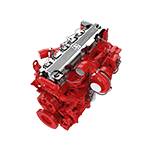Nov . 16, 2024 04:37 Back to list
brake drum wheel cylinder
Understanding Brake Drum, Wheel Cylinder, and Their Importance in Vehicle Safety
Brake systems are crucial for the safe operation of any vehicle. Among the various components that play pivotal roles in vehicle braking, the brake drum and wheel cylinder stand out as key players in drum brake systems. Understanding how these components function, their interaction, and the importance of maintaining them is essential for any vehicle owner or enthusiast.
What is a Brake Drum?
A brake drum is a cylindrical component that is attached to the wheel of a vehicle. It functions as a surface against which the brake shoes press to create friction and slow down or stop the vehicle. When a driver presses the brake pedal, hydraulic pressure is generated, causing the brake shoes to expand outward against the drum, thereby creating the necessary friction to halt the wheel's rotation.
Brake drums are generally made of cast iron or aluminum and can endure high temperatures generated during braking. The design of a brake drum is crucial—it needs to effectively dissipate heat to avoid brake fade, which can significantly impair braking performance.
What is a Wheel Cylinder?
The wheel cylinder is a critical component of the drum brake system. It is a cylindrical device located at each wheel and houses one or two pistons that move outwards when hydraulic pressure is applied. This movement of the pistons pushes the brake shoes against the inner surface of the brake drum, initiating the braking process.
Made predominantly of metal, wheel cylinders are designed to withstand the high pressure and harsh conditions within brake systems. They also contain seals that prevent brake fluid from leaking, ensuring that the braking system remains effective and reliable.
brake drum wheel cylinder

The Interaction Between Brake Drums and Wheel Cylinders
The interaction between the brake drum and the wheel cylinder is fundamental to the drum brake's operation. When the driver engages the brakes, fluid from the master cylinder travels through the brake lines and enters the wheel cylinder. The pressure generated within the wheel cylinder forces the pistons outward, which in turn forces the brake shoes against the brake drum.
As the brake shoes contact the drum, friction is generated, which slows down the wheel. When the driver releases the brake pedal, the hydraulic pressure decreases, allowing the wheel cylinder pistons to retract, and the brake shoes move back to their resting position, disengaging from the brake drum.
Importance of Maintenance
The performance and safety of a vehicle heavily rely on the condition of its braking system. Regular maintenance of the brake drum and wheel cylinder is vital to ensure safe operation. Over time, brake drums can wear out or become warped, leading to decreased braking efficiency and potential safety hazards. Similarly, the wheel cylinder can develop leaks or seize up, causing brake failures.
Signs that these components need attention include unusual noises during braking, the vehicle pulling to one side, or a spongy brake pedal feel. It is advisable for vehicle owners to have their brake systems inspected periodically, particularly before long trips or following significant mileage.
Conclusion
In summary, the brake drum and wheel cylinder are integral components of a vehicle’s braking system. Their proper function is essential for ensuring safety on the road. Understanding how these components work together helps vehicle owners recognize the importance of regular maintenance and timely repairs. Prioritizing the health of your braking system not only enhances vehicle performance but, more importantly, safeguards the safety of everyone on the road.
-
Scania Brake Drums: OEM Quality for Optimal Safety & Durability
NewsAug.16,2025
-
R.V.I: Advanced Remote Visual Inspection for Precision
NewsAug.15,2025
-
Discover HYUNDA: Innovative Vehicles, Equipment & Solutions
NewsAug.14,2025
-
R.V.I: Unlock Advanced Insights & Real-time Performance
NewsAug.13,2025
-
Kamaz Brake Drum: Durable & Reliable for Heavy Duty Trucks
NewsAug.12,2025
-
Heavy Duty Iveco Brake Drum - Premium Quality & Safety
NewsAug.11,2025
